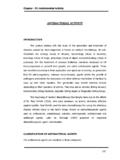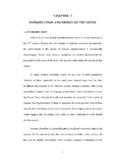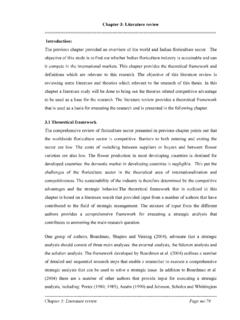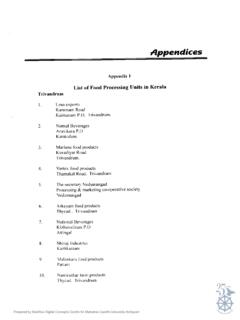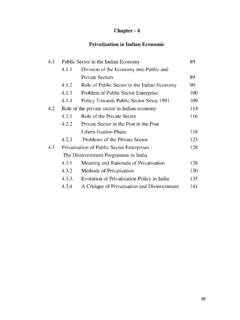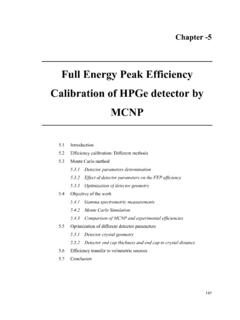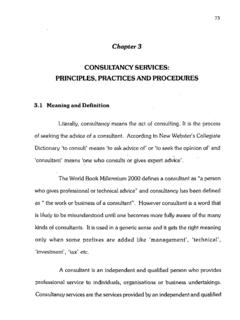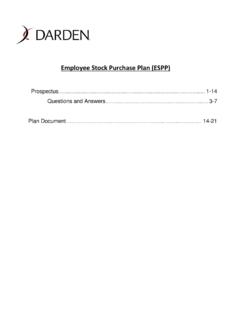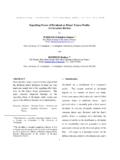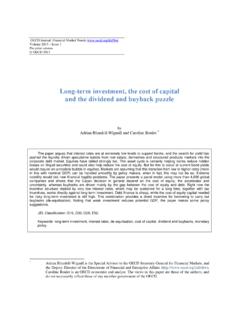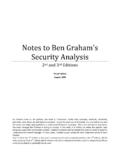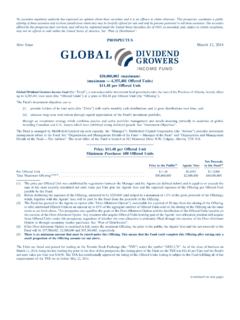Transcription of CHAPTER -3 DIVIDEND POLICY-A THEORY - Shodhganga
1 29 CHAPTER -3 DIVIDEND POLICY-A THEORY 30 CONTENT Introduction DIVIDEND Defined DIVIDEND policy Defined Types of Dividends Cash DIVIDEND Bonus Shares: (OR Stock DIVIDEND in USA) Special DIVIDEND Extra DIVIDEND Annual DIVIDEND Interim DIVIDEND Regular Cash Dividends Scrip dividends Liquidating Dividends Property dividends The DIVIDEND Decision DIVIDEND Payment Procedure DIVIDEND policy Theories The Residual THEORY of DIVIDEND policy DIVIDEND Irrelevancy THEORY , (Miller & Modigliani, (1961) The Bird in the Hand THEORY , (John Linter 1962 and Myron Gordon, 1963 The tax Differential THEORY , (B.)))
2 Graham and Dodd) Percent Payout THEORY (Rubner 1966) Per Cent Retention THEORY (Clarkson and Eliot 1969) Agency Cost THEORY (Jenson) A Summary View of DIVIDEND policy Theories DIVIDEND Models Modigliani Miller approach Walter's Approach Gordon's approach/ DIVIDEND Yield Basis Types of DIVIDEND Policies Generous or liberal DIVIDEND policy 31 Stable DIVIDEND policy Low regular DIVIDEND plus extra DIVIDEND policy Residual DIVIDEND policy Multiple DIVIDEND increase policy Erratic DIVIDEND policy Uniform cash DIVIDEND plus bonus policy Stable DIVIDEND policy .
3 A policy of DIVIDEND smoothing Stable DIVIDEND payout ratio Stable DIVIDEND per share A regular plus extra DIVIDEND policy Rational for stable DIVIDEND policy Steps to be followed in setting dividends DIVIDEND and a firm's life cycle Measures of DIVIDEND policy 32 INTRODUCTION Once a company makes a profit, it must decide on what to do with those profits. They could continue to retain the profits within the company, or they could pay out the profits to the owners of the firm in the form of dividends. The DIVIDEND policy decision involves two questions: 1) What fraction of earnings should be paid out, on average, over time?
4 And, 2) What type of DIVIDEND policy should the firm follow? issues such as whether it should maintain steady DIVIDEND policy or a policy increasing DIVIDEND growth rate etc. On the other hand Management has to satisfy various stakeholders from the profit. Out of the Stakeholders priority is to be given to equity share - holders as they are being the highest risk. DIVIDEND - DEFINED DEFINITION: DIVIDEND According to the Institute of Chartered Accountants of India, DIVIDEND is "a distribution to shareholders out of profits or reserves available for this purpose.
5 "7 "The term DIVIDEND refers to that portion of profit (after tax) which is distributed among the owners / shareholders of the firm."8 " DIVIDEND may be defined as the return that a shareholder gets from the company, out of its profits, on his shareholdings."9 In other words, DIVIDEND is that part of the net earnings of a corporation that is distributed to its stockholders. It is a payment made to the equity shareholders for their investment in the company. As per the section 2(22) of the Income Tax Act, 1961, DIVIDEND defined as:- 7 Guidance Note on Terms used in Financial Statements, ICAI 8 Rustagi, Financial Management, Galgotia Publishing Company, 2001, p.
6 806 9 Dr. Maheshwari, Elements of Financial Management, Sultan Chand and Sons, 1999, p. C 71 33 "Any distribution of accumulated profits whether capitalized or not, if such distribution entails a release of assets or part thereof". DIVIDEND is a reward to equity shareholders for their investment in the company. It is a basic right of equity shareholders to get DIVIDEND from the earnings of a company. Their share should be distributed among the members within the limit of an act and with rational behavior of directors. The word DIVIDEND has not been defined in The Indian Companies Act, 1956.
7 It may be described as a periodical cannot be declared from capital gains under following conditions: i) Provision in Articles of Association. ii) Capital gain must be realized. All assets & liabilities must be revalued before distributing this capital gain. DEFINITION: DIVIDEND policy " DIVIDEND policy determines the ultimate distribution of the firm's earnings between retention (that is reinvestment) and cash DIVIDEND payments of shareholders."10 " DIVIDEND policy means the practice that management follows in making DIVIDEND payout decisions, or in other words, the size and pattern of cash distributions over the time to shareholders.
8 "11 In other words, DIVIDEND policy is the firm's plan of action to be followed when DIVIDEND decisions are made. It is the decision about how much of earnings to pay out as dividends versus retaining and reinvesting earnings in the firm. DIVIDEND policy means policy or guideline followed by the management in declaring of DIVIDEND . A DIVIDEND policy decides proportion of DIVIDEND and retains earnings. Retained earnings are an important source of internal finance for long term growth of the company while DIVIDEND reduces the available cash funds of company.
9 10 Moyer Mc Guigan Kretlow, Contemporary Financial Management, Eight edition, Southwestern College Publishing, 2001 p. 516 11 Ronald C. Lease, Kose John, Avner Kalay. Uri Loewenstein, Oded H. Sarig, DIVIDEND policy - Its Impact on Firm Value, Harvard Business School Press, Boston, Massachusetts, 2000 p. 29 34 "As long as the firm has investment project whose returns exceed its cost of capital, it will use retained earnings to finance these projects".12 There is a reciprocal relationship between retained earnings and DIVIDEND larger the retained earnings, lesser the DIVIDEND and smaller the retained earnings, larger the DIVIDEND .
10 James E. Walter (1963) says "Choice of DIVIDEND policy almost effects the value of the enterprise 13 " DIVIDEND policy must be evaluated in light of the objective of the firm namely, to choose a policy that will maximize the value of the firm to its shareholders" Financial Management and As we know in corporation, owners are shareholders but management is done through Board of directors. It is the Board of Directors to decide whether to pay DIVIDEND or retain earnings for future projects. It is a matter of conflict between shareholders and directors.

